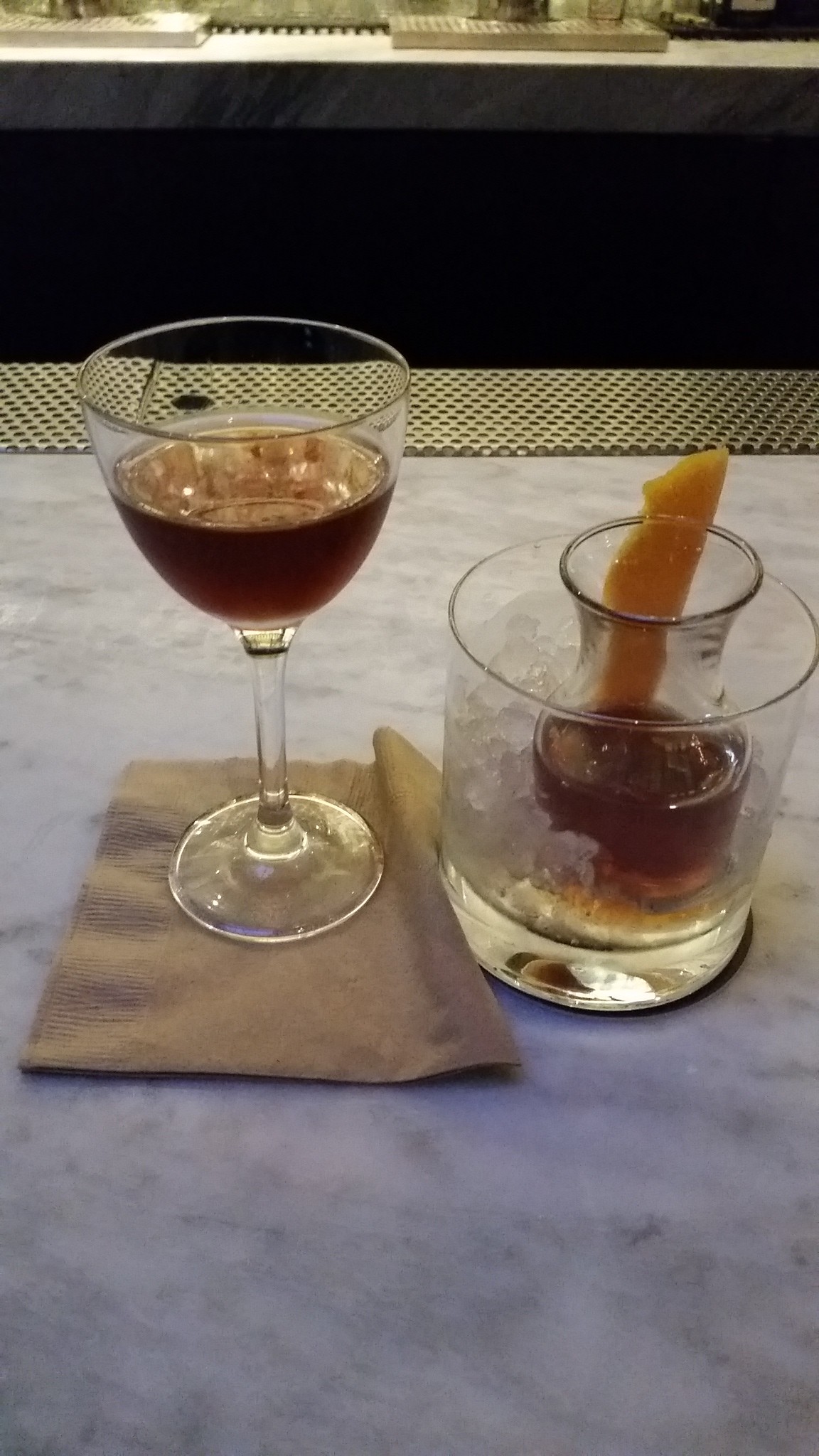Drink of the Week: The Red Line
 No need to go into details about the geekiness that brought me there, but this last Easter Sunday found this very secular Jew in downtown L.A. Not wanting to waste an opportunity to hit one of the countless outstanding bars in my town’s ever-cooler civic seat, but also being only too aware that it was a pretty major holiday, it appeared that my best bet for a DTLA libation was the relatively new E.R.B., aka Everson Royce Bar, a recent outgrowth of Pasadena’s noted Everson Royce wine and spirits emporium.
No need to go into details about the geekiness that brought me there, but this last Easter Sunday found this very secular Jew in downtown L.A. Not wanting to waste an opportunity to hit one of the countless outstanding bars in my town’s ever-cooler civic seat, but also being only too aware that it was a pretty major holiday, it appeared that my best bet for a DTLA libation was the relatively new E.R.B., aka Everson Royce Bar, a recent outgrowth of Pasadena’s noted Everson Royce wine and spirits emporium.
And that’s how I encountered today’s drink, the creation of the ERB bartender who calls himself Jonathan B. Jonathan had come up with the drink the night or two before, and he suggested it when I told him I was up for just about anything good. It’s a rich, strong concoction that I pronounced nifty on the spot.
Since there’s already a drink on the ERB menu called the Gold Line, referring to the commuter train that can take you from Pasadena to the downtown L.A. arts district, I suggested naming this drink after the slightly further afield Red Line, which would soon take me back to my North Hollywood home via nearby-enough-for-a-cheap-Uber ride Union Station. Yes, L.A. is finally starting to have decent public transit, just like we already have more than our fair share of good bars.
The Red Line
1 1/2 ounces rye whiskey
1/2 ounce Cynar
1/2 ounce Lillet Blanc
2 dashes Angostura bitters
2 dashes Peychaud’s or Scrappy’s Orleans bitters
1 orange twist (desirable garnish)
Shake or stir the contents in a cocktail shaker or mixing glass and strain into a cocktail glass. Add the orange twist, and toast our nation’s great cities and the creative bartenders who inhabit them.
*****
Bartender Jonathan developed this drink around Templeton Rye, a really terrific product that is probably ideal for the Red Line — it’s long on flavor while relatively mellow and slightly underproof by American whiskey standards at a mere 40% alcohol. It makes for a good mix with the sweeter and somewhat bitter and spicy flavors of the other ingredients. Back at my place, however, I had almost as good results using Dickel Rye and, even more so, Crown Royal’s characteristically smooth rye, both clocking in at 45% alcohol. Alas, my default rye, 100 proof (i.e., 50% demon booze) Rittenhouse, proved somewhat too overbearing for the Red Line.
Cynar — an amaro-esque, Campari-ish artichoke liqueur I really dig — has only one brand, and the same goes for Lillet Blanc, a sort of lightly sweet vermouth that’s probably best known for the complicated role it plays in the Vesper. On other hand, when it comes to a choice of bitters, Jonathan’s selection was Scrappy’s Orleans bitters, a cardamon-heavy blend clearly inspired by Peychaud’s bitters, arguably the oldest such product on the market. I personally lean towards the older brand, which is easier to find, in any case.
Finally, there is the whole matter of shaking versus stirring. Following the dictate of cocktail conventional wisdom, which calls for stirring all drinks that don’t contain juices, Jonathan vigorously stirred his drink in the traditional mixing glass using crushed ice. At home, I tried it both shaken and stirred, and both ways worked okay. If you’re a shaker, I say shake, but if you’re a stirrer, you can definitely stir. Just know the stirred version will be a bit less approachable but punchier, more flavorful and, as my in-house guinea pig put it, a little more “tingly.”
Related Posts
Posted in: Food & Drink, Lifestyle, Vices
Tags: cocktails, Drink of the Week, E.R.B., Everson Royce Bar, Happy Hour, Templeton Rye, the Red Line





